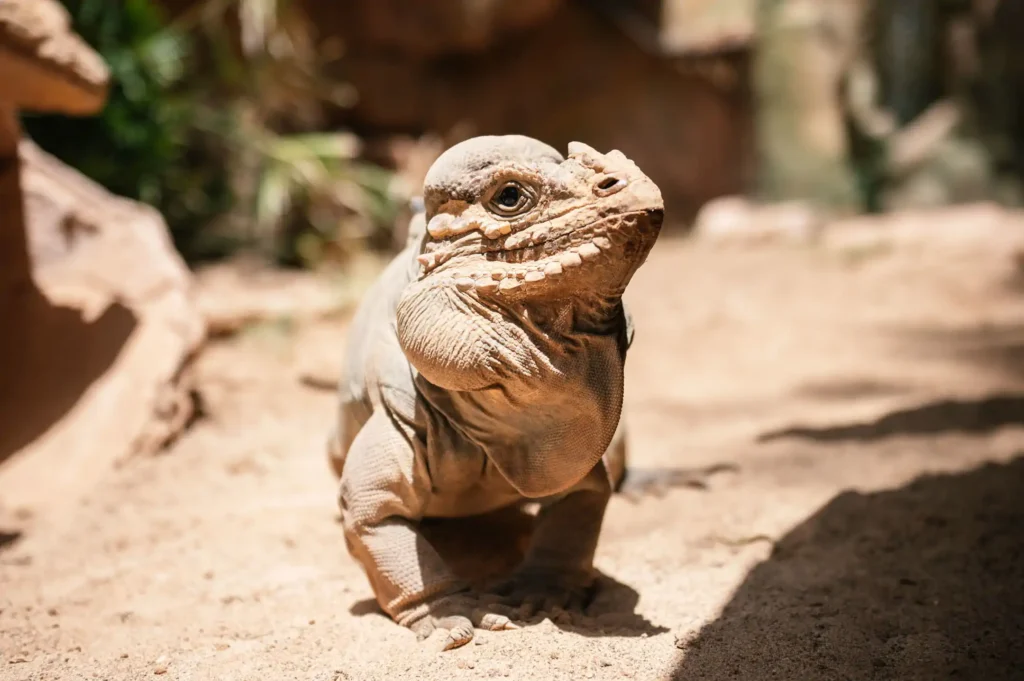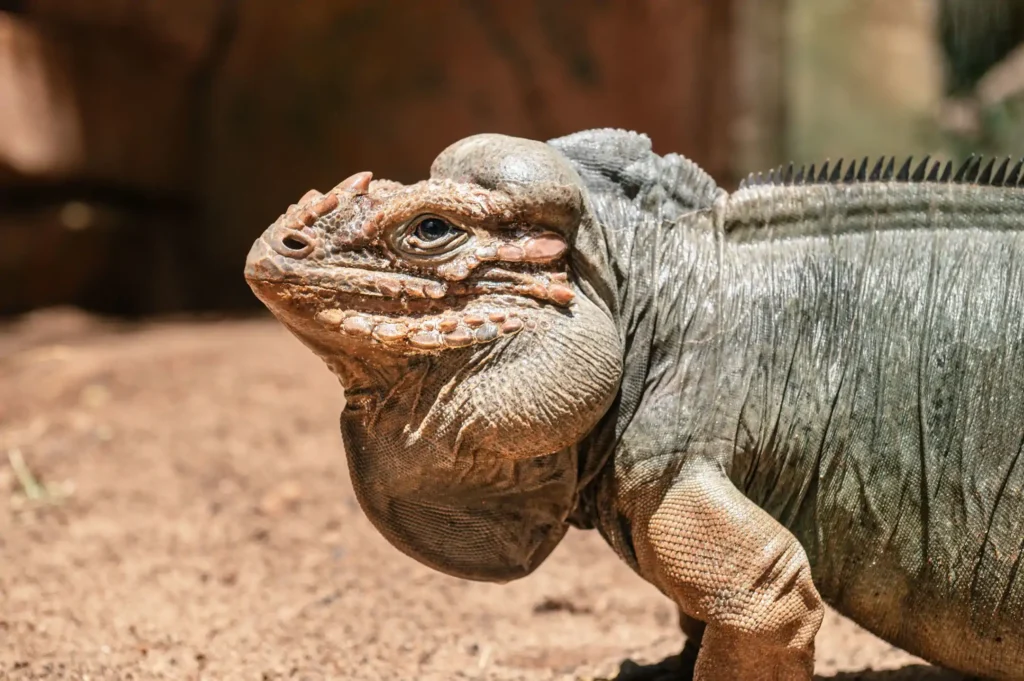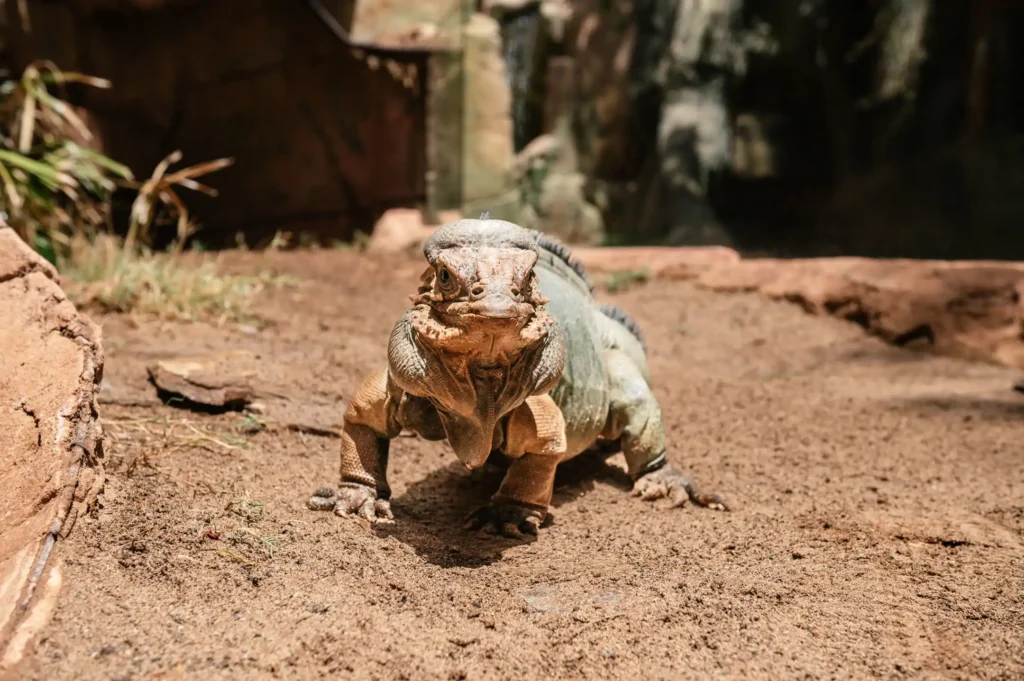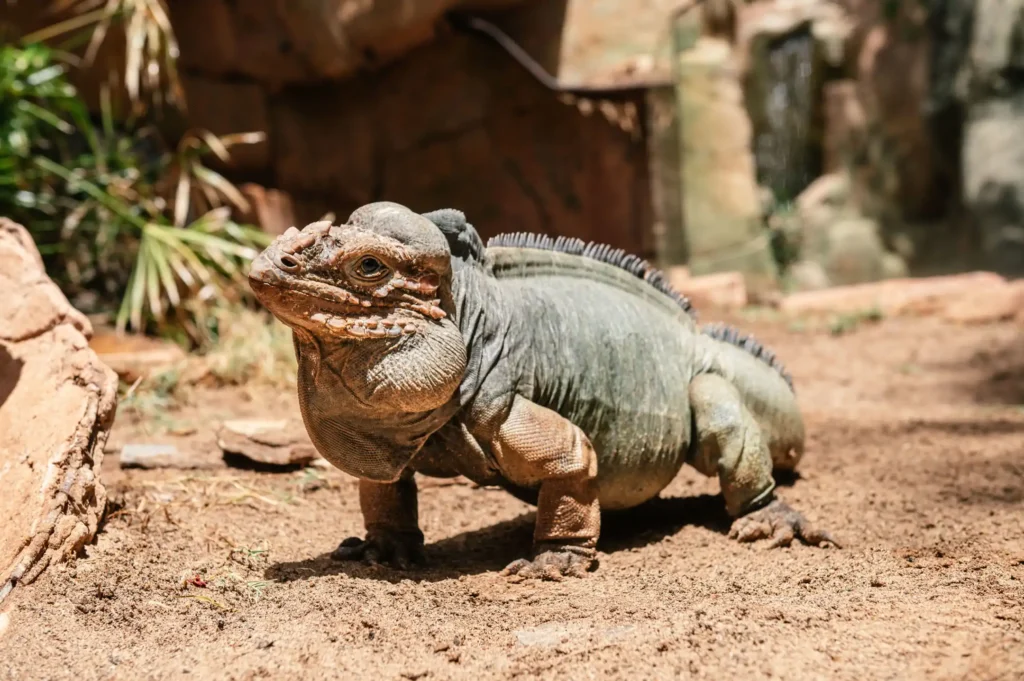They get their name from the small horn-like protuberances on their heads.
Physical features
These reptiles can be up to 1.8 metres long and weigh up to 5kg.
The skin of this iguana is rough in appearance and covered with greyish-brown or green scales. The name rhinoceros is given by the large scales in the form of small horns on the upper part of the snout.
The back of its body has spine-like scales extending from the neck to the tail.
Sexual dimorphism, i.e. the differences between males and females, lie in the larger size of the males and the presence of somewhat larger horns than in the females. As with most iguanas, they have good eyesight and sense of smell.
Habitat
In the wild, they can only be found on the Caribbean ssland of Hispaniola, Beata Island and Haiti.
They inhabit coastal or low-lying areas, although due to the urbanisation of the coasts they are increasingly found inland in bushy or grassy areas.
Diet
Their diet is herbivorous, preferably green shoots, leaves, fruit and woody stems, but in certain situations, especially in young individuals, they eat some invertebrates and eggs.
Reproduction
Adult iguanas reach sexual maturity at nine years of age. The female lays between 5 and 20 eggs, which will hatch 170 days later and produce very active young.
The father generally neglects the eggs after laying, although he sometimes guards the nest to prevent attacks by predators.
Males, in particular, are very territorial and intimidate other males by making threatening head movements.
Threats
The destruction of its habitat due to urbanisation and indiscriminate hunting for the illegal pet market, together with its poor geographical distribution, have brought this species to the brink of extinction in the wild.
Status and conservation
This species is found in very small number in nature and is therefore listed as “endangered” on the IUCN Red List and is protected by the CITES Convention in Annex I of the Convention.





